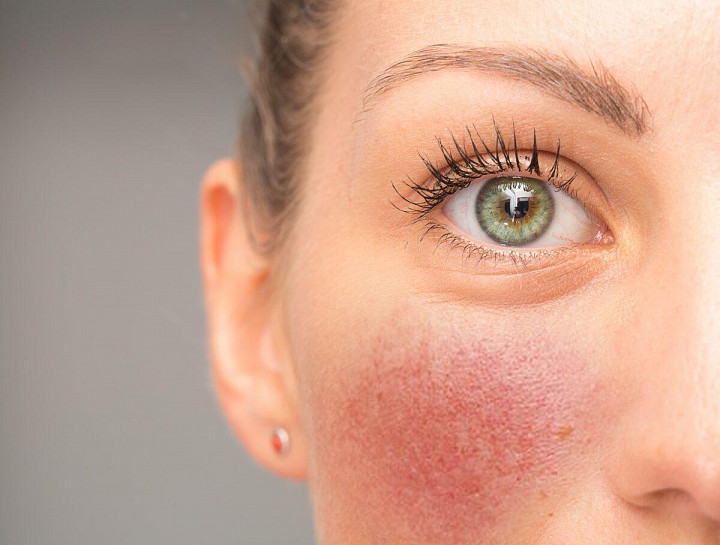Erythematotelangiectatic Rosacea: Symptoms & Treatment
Erythematotelangiectatic rosacea (ETR) is one of the four main subtypes of rosacea, a chronic skin condition that primarily affects the face. This particular form of Rosacea Treatment in Dubai is characterized by persistent redness, visible blood vessels, and flushing. Unlike other forms of rosacea that may involve bumps, pustules, or skin thickening, ETR is defined by vascular symptoms. Understanding its symptoms and treatment options is essential for individuals who are dealing with this condition.
What is Erythematotelangiectatic Rosacea?
Rosacea, in general, is a common inflammatory skin condition that affects millions of people worldwide. Erythematotelangiectatic rosacea is specifically marked by prolonged or frequent facial redness, often due to dilated blood vessels. It is the most common and mildest form of rosacea but can still cause significant discomfort and embarrassment for sufferers.
ETR typically manifests in adults between the ages of 30 and 60 and is more common in individuals with fair skin, though it can affect anyone. The condition often worsens with time if left untreated, and while there is no cure, effective treatments are available to manage symptoms and improve the quality of life.

Symptoms of Erythematotelangiectatic Rosacea
The symptoms of ETR are distinct, primarily involving changes to the skin’s appearance. People with this form of rosacea usually experience:
1. Persistent Redness (Erythema)
The most common symptom is a persistent redness or flushing of the central face, particularly the nose and cheeks. This is due to the dilation of small blood vessels close to the surface of the skin. While some redness might temporarily fade, it tends to become permanent over time.
2. Visible Blood Vessels (Telangiectasia)
One of the hallmark signs of ETR is the appearance of small, visible blood vessels under the skin, a condition known as telangiectasia. These thread-like red lines or patterns often develop across the nose, cheeks, chin, and forehead, becoming more prominent as the condition progresses.
3. Flushing
Flushing is another frequent symptom of ETR, where the skin turns red for short periods due to environmental triggers. Triggers can include hot or cold weather, spicy foods, alcohol, stress, or exposure to the sun. These flushes are more intense and longer-lasting than normal blushing.
4. Burning or Stinging Sensation
Many individuals with ETR report a burning or stinging sensation on the affected areas. This discomfort can occur with or without visible flushing and is sometimes accompanied by itching or dryness.
5. Skin Sensitivity
The affected skin is often more sensitive and prone to irritation. Many sufferers experience discomfort when using skincare products or cosmetics. The skin may feel tight, dry, or rough.
6. Swelling (Edema)
Although not as common, some individuals with ETR may experience mild facial swelling, particularly after periods of intense flushing.
Triggers of Erythematotelangiectatic Rosacea
Understanding triggers can help manage ETR symptoms. Common triggers include:
- Sun exposure: UV rays can aggravate symptoms and cause flare-ups.
- Extreme temperatures: Hot or cold weather, wind, and humidity can trigger flushing.
- Stress: Emotional stress, anxiety, or embarrassment may provoke symptoms.
- Diet: Spicy foods, hot beverages, alcohol, and caffeine are common dietary triggers.
- Medications: Certain medications, like those that dilate blood vessels, can worsen rosacea symptoms.
- Skin irritation: Harsh skincare products or physical exfoliation can cause sensitivity.
Diagnosis
A dermatologist will typically diagnose ETR based on the patient's history and physical examination. A thorough skin assessment will be conducted to rule out other conditions that can cause facial redness, such as lupus, eczema, or acne. In some cases, additional tests might be conducted to assess the blood vessels more closely.
Treatment for Erythematotelangiectatic Rosacea
While ETR cannot be cured, several treatment options are available to manage and reduce symptoms. These treatments focus on minimizing redness, soothing irritation, and reducing the appearance of visible blood vessels.
1. Topical Treatments
Topical treatments are often the first line of defense for managing ETR symptoms. Commonly prescribed medications include:
- Brimonidine Gel: This vasoconstrictor reduces redness by constricting blood vessels temporarily, helping to alleviate flushing and erythema.
- Oxymetazoline Cream: Similar to brimonidine, this cream helps reduce redness and flushing by shrinking dilated blood vessels.
- Anti-inflammatory Creams: Topical metronidazole or azelaic acid can help reduce inflammation and irritation associated with ETR.
2. Laser Therapy
Laser and light-based treatments are highly effective for reducing the appearance of visible blood vessels. Intense Pulsed Light (IPL) therapy, in particular, targets the blood vessels beneath the skin, breaking them down and reducing redness. Multiple sessions may be required, but patients often see a significant improvement.
3. Oral Medications
In some cases, oral medications may be prescribed, especially if the symptoms are severe or resistant to topical treatments. These may include:
- Oral antibiotics: Low-dose doxycycline is often used for its anti-inflammatory properties, even though rosacea is not caused by bacteria.
- Beta-blockers or Clonidine: These medications may help reduce flushing by controlling the dilation of blood vessels.
4. Lifestyle and Skincare Modifications
Simple changes in daily habits can significantly reduce the frequency and intensity of ETR flare-ups. Some tips include:
- Avoid triggers: Identifying and avoiding known triggers like sun exposure, spicy food, and alcohol can help control flare-ups.
- Sun protection: Wearing sunscreen daily is essential for people with ETR. Broad-spectrum sunscreens with high SPF are recommended.
- Gentle skincare: Use mild, fragrance-free cleansers and moisturizers to avoid irritation. Avoid scrubbing or exfoliating the skin, as this can worsen symptoms.
- Cold compresses: Applying a cold compress to the face can soothe inflammation and reduce redness.
Conclusion
Erythematotelangiectatic rosacea, though chronic, can be effectively managed with proper care and treatment. Early diagnosis and intervention are essential to prevent the condition from worsening. By following prescribed treatments, adopting healthy skincare habits, and avoiding triggers, individuals with ETR can minimize flare-ups and lead a more comfortable life. If you suspect you have ETR, consulting with a dermatologist is the first step toward controlling this skin condition.
